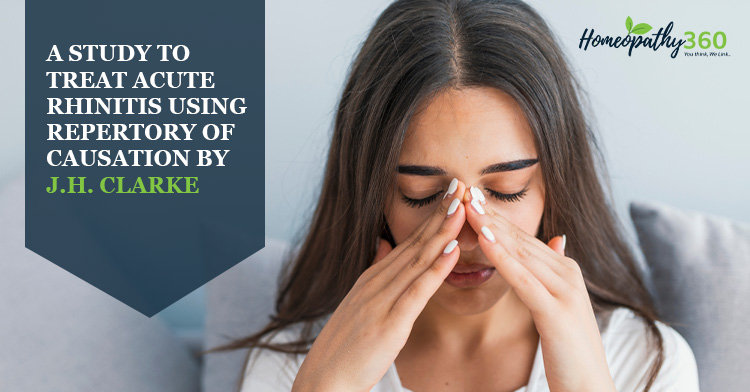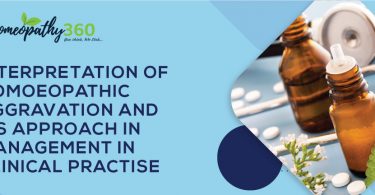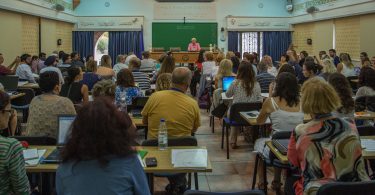
A study to assess the effectiveness of causative rubrics in treating acute rhinitis using Repertory of Causation by J.H. Clarke, rhinitis control assessment test scale used for statistical analysis
OBJECTIVE: A study to assess the effectiveness of causative rubrics in treating acute rhinitis using Repertory Of Causation by J.H. Clarke, rhinitis control assessment test scale used for statistical analysis.
MATERIAL AND METHODS: A study was prospective observational conducted on 27 cases of acute rhinitis, attending to OPD and peripheral centres of Father Muller Homoeopathic Medical College Hospital, Mangalore. Diagnosis was based on the clinical presentation; patients were subjected answer the questionnaire, i.e. rhinitis control assessment test scale, and the remedies are selected depending upon the ailments from factors that’s been obtained by case taking through the standardized case record, after referring to the repertory of causation by J.H. Clarke, remedy been prescribed in either of 30th, 200, 1M, 0/1 potencies for the duration of about 2 weeks. After 2 weeks follow up been taken and again patients were asked to fill questionnaire-rhinitis control assessment test scale, data for the study been collected and paired t test was used for statistical analysis.
RESULT: The study showed that males are most commonly affected. And the most common age group affected was 18 –22with about 33.3%, females are most commonly affected with 59.2%, the most prevailed ailments from factor among the study group is cold wind and ice foods with about 14.8%, remedy and potency which came up in most of the cases are Arsenicum album with about 29.6% and 200th potency with about 51.8%. The values of rhinitis control assessment test scale were compared before and after the treatment. Statistical analysis was done base on paired t test, – The calculated ‘p’ value is 0.0004 less than 0.05. This is considered to be extremely statistically significant.
CONCLUSION: This study adequately demonstrates the effectiveness of prescribing Homoeopathic remedies in acute rhinitis depending upon causative rubrics using repertory of causation by J.H. Clarke.
KEY WORDS: homoeopathy, acute rhinitis, rhinitis control assessment test scale, Repertory of Causation by J.H. Clarke, causative rubrics, paired ‘t’ test.
ABBREVATIONS: A/F: ailments from, Av: aversion, B/L: bilateral, Cr: craving, DM: dominant miasm, FM: fundamental miasm, IPD: in patient department, <: aggravation, >: amelioration, 0: abrupt disappearance of symptoms, G: good, Occ: occasional, O/E: on examination, OPD: outpatient department, RX: remedy, R/O: ruled out, SCR: standardised case record, SD: standard deviation, S: same, A: absent. RCAT: rhinitis control assessment test.
INTRODUCTION: Acute rhinitis is an acute inflammation of the nasal mucosa, caused due to viral, bacterial, irritant varieties. (1) Acute rhinitis is the most common condition affecting about 10% to 30% of adult and 40% children. Prevalence of the disease is marked in all age groups, especially in children it’s more marked. (3) Viral acute rhinitis which is also known as common cold or coryza caused by adenovirus, picorna virus, coxsackie virus. The infection is usually obtained through airborne droplets. (2) Acute bacterial rhinitis, it’s a non-specific infection, it may be either primary or secondary. Primary bacterial acute rhinitis is seen in the children and is caused due to the pneumococcus, streptococcus, and staphylococcus. Secondary acute bacterial rhinitis is the result of bacterial infection supervening acute viral rhinitis. (1), (4) Irritant bacterial rhinitis occur mainly due exposure to the dust, smoke, polluted environment, irritating gases. (1) Homoeopathy has great scope in treating acute rhinitis. The scope of homoeopathy doesn’t lie in treating the causative agent or its ultimate, but in treating the actual morbid vital process by method of individualisation, in case of acute diseases causative modalities play important role in selection of remedy and treating the patients (5). Sir Christian Friedrich Samuel Hahnemann in aphorism 71 of Organon of Medicine stated, ‘the disease to which man is liable is either rapid morbid process of abnormal deranged vital force, which has tendency to finish their course more or less quickly, but always in moderate time these are termed acute disease. (5) In aphorism 73 of Organon of Medicine, acute diseases are further classified into acute individual, acute sporadic, epidemic acute disease. As it is known that the cause for the individual acute disease is exciting cause “useful to the physician in assisting him to cure are the particulars of the most probable exciting cause of the acute disease” the exciting cause are of different types- exciting cause of mental or physical origin in case of individual acute disease, in sporadic acute disease exciting cause is either meteoric( climatic influences, atmospheric, or physical agents) or telluric (influences in the soil, water) , in epidemic acute disease its due to infection. (5)(9)(10) Repertory of causation by J.H.Clarke is selected for differentiating remedies according to their causation and for prescribing and rhinitis control assessment test scale is used for final statistical analysis. (6)(7)(8)
AIM AND OBJECTIVE: To assess the effectiveness of causative rubrics in treating acute rhinitis using repertory of causation by J.H. Clarke, RCAT scale (Table-1) used for statistical analysis.
MATERIAL AND METHODS
SAMPLE SIZE:
n = Zα2p(1-p)
e2
Prevalence = 20%, Zα = 1.96 at 95% confidence interval of mean difference, n = sample size, e (allowable error) = 15%, p = 20
n = (1.96)2 20(1−20)
(15)2
= 27.3 = 27
SELECTION CRITERIA: Age group 5-60, both sexes, patients giving consent to participate in study, all the newly reporting cases of acute rhinitis, already registered patients presenting with a new acute complaint of acute rhinitis.
EXCLUSION CRITERIA: The cases without proper follow up were excluded.
TABLE: 1 RHINITIS CONTROL ASSESSMENT TEST:
1. During past week, do you often have nasal congestion?
| NEVER | RARELY | SOMETIMES | OFTEN | EXTREMELY OFTEN |
2. During past week, how often do you sneeze?
| NEVER | RARELY | SOMETIMES | OFTEN | EXTREMELY OFTEN |
3. During past week, how often do you have watery of eyes?
| N NEVER | RARELY | SOMETIMES | OFTEN | EXTREMELY OFTEN |
4. During past week, to what extent does your nasal or allergy symptoms interfere with your sleep?
| NEVER | RARELY | SOMETIMES | OFTEN | EXTREMELY OFTEN |
5. During past week, how often did you avoid any activities (for examples visiting a house with a dog or a cat, gardening) because of your nasal or other allergy symptoms?
| NEVER | RARELY | SOMETIMES | OFTEN | EXTREMELY OFTEN |
6. During past week, how well were your nasal or allergy symptoms controlled?
| NEVER | RARELY | SOMETIMES | OFTEN | EXTREMELY OFTEN |
SCORING: ASSESSEMENT OF SCALE: score ranges from 6 to 30, higher scoring indicates better rhinitis symptoms control.
5-Never, 4 -Rarely, 3-Sometimes, 2-Often, 1-Extremely Often
TABLE-2: EXAMPLE OF CASES WITH SELECTION OF RUBRIC
| Sl.no | Preliminary data and c/o | Rubric | Remedy | Follow up |
| 1. | Name: Mrs. J Age: 42 Sex: F Religion: Hindu Education: B.com Occupation: Housewife Marital status: married SCR no: 58513 c/o: a/f: from eating ice cream, sneezing, coryza, for 3 days | Ice cream. | 𝑅x Pulsatilla nigricans 200 2packet-HS (weekly/once) | Sneezing- > Coryza-> Watery nasal discharge-0 Headache-0 Thirst-improved |
| 2. | Name: Mrs. Hilda Age: 28 Sex: F Religion: Christian Education: 2ndPUC Occupation: Housewife Marital Status: Married SCR No: 597 c/o: a/f: dry cold wind, coryza (watery nasal discharge), continuous sneezing for 5 days | Dry, cold wind | 𝑅x Hepar sulphuricum 30 1packet HS/week | Sneezing-0 Coryza-> Watery nasal discharge-> Nasal irritation-0 Nose block-0 Appetite-Improved |
| 3. | Name: Mr. R Age: 18 Sex: M Religion: Islam Education: 12th Std Occupation: Student Marital Status: Single SCR No: 55458 c/o: a/f: getting wet of head in rain, coryza, sneezing, < evening, accompanied by bitter taste in mouth, heaviness of head for 2 weeks | Head wet,getting | 𝑅𝑋 Belladonna 200 1packet HS/week | Sneezing-0 coryza -0 Watery nasal discharge-0 Bitter taste in mouth- A Heaviness of Head- A |
| 4. | Name: Mr. E Age: 62 Sex: M Religion: Christian Education: B. Com Occupation: Manager Marital Status: Married SCR No: 1630/19 c/o: a/f: drinking cold water, sneezing, < exposure to dusty environment coryza–watery, decreased appetite for 3 days | Drinking ice water | 𝑅𝑋 Arsenicum album 200 1packetHS/week | Sneezing-0 coryza -0 Watery nasal discharge-0 Appetite-good |
| 5. | Name: Miss. K Age: 19 Sex: F Religion: Islam Education: 1st Year B.E. Occupation: Student Marital Status: Single SCR No: 58154 c/o: a/f: exposure to cod wind, nose block, sneezing, coryza (thick yellow discharge) < night, >elevation of head, Increased thirst for 1 week | Cold wind | 𝑅𝑋 Bryonia alba 200 4-4-4(BF)/week | Sneezing-0 coryza -> nasal discharge-0 nose block-0 thirst-improved |
MEDICATION: Remedies selected according to the ailments as per the factors that were being obtained through case taking from standardised case record and after referring to Repertory Of Causation by J.H.Clarke, remedy was prescribed in either of 30th, 200, 1M, 0/1 potencies for the duration of about either 1week or 2 weeks.
Table 3: Distribution of the study based on rhinitis control assessment test scale before and after treatment -maximum score: 30
| SL .no of the cases | Score -before | Score – after |
| 1 | 11 | 25 |
| 2 | 11 | 24 |
| 3 | 10 | 23 |
| 4 | 13 | 26 |
| 5 | 1 | 26 |
| 6 | 12 | 24 |
| 7 | 15 | 26 |
| 8 | 15 | 23 |
| 9 | 12 | 27 |
| 10 | 13 | 27 |
| 11 | 12 | 25 |
| 12 | 10 | 25 |
| 13 | 10 | 28 |
| 14 | 13 | 26 |
| 15 | 11 | 27 |
| 16 | 10 | 27 |
| 17 | 15 | 27 |
| 18 | 14 | 25 |
| 19 | 13 | 23 |
| 20 | 14 | 23 |
| 21 | 17 | 23 |
| 22 | 13 | 25 |
| 23 | 13 | 23 |
| 24 | 12 | 25 |
| 25 | 8 | 26 |
| 26 | 11 | 25 |
| 27 | 7 | 24 |
TABLE 4: Distribution of the study based on the rhinitis control assessment test scale before and after treatment
| Score (0-30) | Before | Percentage% | After | Percentage% |
| 0 -5 | 0 | 0% | 0 | 0% |
| 6 -10 | 6 | 22.2% | 0 | 0% |
| 11 – 15 | 20 | 74% | 0 | 0% |
| 16 – 20 | 1 | 3.7% | 0 | 0% |
| 21-25 | 0 | 0% | 16 | 59.2% |
| 26 -30 | 0 | 0% | 11 | 40.7% |
Finding:(Table-4) Totally 27 cases have been taken for study depending upon the selection criteria and all are subjected to fill the rhinitis control assessment test scale questionnaire, before and after the treatment. Among them before the administration of the medicine-Highest score is 11- 15 (74%), Followed by score 6-10(22.2%), Score16-20(3.7%). After the administration of the medicine, the highest score 21-25(59.2%), Score 26-30(40.7%)
TABLE 5: Calculation of mean:
| Before (x) | After(y) | |
| Mean value | 12.19 | 25.11 |
TABLE 6: Calculation of mean difference:
| Before and after assessment of rhinitis control assessment test scale | |
| Mean difference | 12.92 |
Calculation of average of before and after mean= 18.65
Calculation of standard deviation= 1.714
Calculation of standard error=0.329
95% of confidence interval of mean difference = 1.96
Degree of freedom = n-1 = 27-1 =26
Calculation of t ratio= 39.390
Pair difference lower= (x-y)- (t ratio) =12.92- 39.39
Pair difference upper= (x-y) + (t ratio) = 12.92 + 39.390
Calculation of correlation coefficient = ± 39.4
We wish to test HO: M1 = M2 against Ha: M2> M 1 For each pair, 2nd score been subtracted from the first and the pair having both the observation same considered as 0 Sign of difference • Number of + signs = 0 • Number of – signs = 27 • Number of 0 = 0 Reduced sample size = 27 S = max (0, 27) = 27 S = max (0, 27) = 27
P value for this one-sided test = prob [ observing a value of 27 or higher using B (27, ½)] = 1- prob [ observing a value of 26 of using (27, ½)] = 1- 0.99534 = 0.000466
Statistical Evaluation – Paired ‘t’ Test: PAIRS = BEFORE with AFTER (PAIRED), Confidence Interval Level 95% = 1.96
Table 7: Paired Sample Statistics:
| Pair | Mean | N | Std. Deviation | S.E. |
| Before | 12.19 | 27 | 2.195 | 0.422 |
| After | 25.11 | 27 | 1.233 | 0.237 |
Mean of standard error = 0.329
Table 8: Paired Samples Correlations:
| N | CORRELATION | SIG. | ||
| Pair | BEFORE AND AFTER | 27 | 39.4 | 0.12 |
Table 9: Paired Sample Test:
| Pair | Pair Difference | t | df | sig.(2-tailed) | |||
| Before –After | Mean | Std. Deviation | Std. Error Mean | Lower | Upper | ||
| 18.65 | 1.714 | 0.329 | -26.47 | +52.31 | 39.390 | 26 | .0004 |
Result: The study showed that males are most commonly affected. And the most common age group affected was 18 –22with about 33.3%, females are most commonly affected with 59.2%, the most prevailed ailments from factor among the study group is cold wind and ice foods with about 14.8%, remedy and potency which came up in most of the cases are Arsenicum album with about 29.6% and 200th potency with about 51.8%. The values of rhinitis control assessment test scale were compared before and after the treatment. Statistical analysis was done base on paired t test, – The calculated ‘p’ value is 0.0004 less than 0.05. This is considered to be extremely statistically significant.
Summary: A study was prospective observational conducted on 27 cases of acute rhinitis, attending to OPD and peripheral centres of Father Muller Homoeopathic Medical College Hospital, Mangalore. Diagnosis was based on the clinical presentation; patients were subjected answer the questionnaire-Rhinitis Control Assessment Test Scale, and the remedies are selected depending upon the ailments from factors that’s been obtained by case taking through the standardized case record, after referring to the Repertory of causation by J.H.Clarke, remedy been prescribed in either of 30th, 200, 1M, 0/1 potencies for the duration of about 2 weeks. After 2 weeks follow up been taken and again patients were asked to fill questionnaire-rhinitis control assessment test scale, data for the study been collected and paired t test was used for statistical analysis.
The study showed that males are most commonly affected. And the most common age group affected was 18 –22with about 3.33%, females are most commonly affected with 5.92%, the most prevailed ailments from factor among the study group is cold wind and ice foods with about 1.48%, remedy and potency which came up in most of the cases are Arsenicum album with about 2.96% and 200th potency with about 5.18%. The values of rhinitis control assessment test scale were compared before and after the treatment. Statistical analysis was done base on paired t test, – The calculated ‘p’ value is 0.0004 less than 0.05. This is considered to be extremely statistically significant.
Conclusion: The calculated ‘p’ value is 0.0004 less than 0.05. This is considered to be statistically significant.
Fund: financial support and sponsorship none.
Conflict Of Interest: None declared.
Acknowledgement: I’m grateful to my guide in post-graduation Dr Sisir. P.R head of the Department of Paediatrics for his support in writing this article. I’m also gratitude to my parents for their support and blessings. Cooperation of the patient and family are also gratefully acknowledged who came for follow-ups timely during the treatment and expressed their willingness to share their case for this article.
BIBLIOGRAPHY
- Dhingra P, Dhingra S, Dhingra D. Diseases of ear, nose and throat & head and neck surgery. New Delhi, India: Elsevier; 2014.
- Maran A, Hussain S. Logan Turner’s Diseases of the Nose, Throat and Ear. Boca Raton: CRC Press; 2015.
- Scott-Brown W, Gleeson M. Scott-Brown’s otolaryngology, head and neck surgery. London: Hodder Arnold; 2008.
- Maqbool M, Maqbool S. Textbook of ear, nose and throat diseases. London: J.P.Medical Ltd; 2013.
- Hahnemann S. Organon of medicine. B. Jain publishers; 2002.
- Meltzer E O., Schatz M, Nathan R, Garris c, Stanford R H, Kosinski M. Reliability, validity, and responsiveness of the Rhinitis Control Assessment Test in patients with rhinitis. J Allergy Clin Immuno 2013; 131-2:379-386.
- Guyatt GH, Osborn M, Wu AW, Wywrich KW, George JM. Methods to explain the clinical significance of health status measures. Mayo Clin Proc 2002; 77:317-83.
- Clarke JH. Clinical Repertory. B. Jain Publishers; 1993.
- Babu DG. Comprehensive Study Of Organon An Attempt To Understand The Organon Of Medicine As A Scientific Treatise, B.
- Thombre PB. Gems of Organon. New Delhi: B.
About Author:
Uma Maheswari MS*1, Arun Varghese2, *1 PG Scholar, Dept of Paediatric, Sarada Krishna Homoeopathic Medical College, Kulasekharam,2 Assistant Professor Department of Materia Medica, Father Muller Homoeopathic Medical College and Hospital, Deralakatte, Mangaluru.





